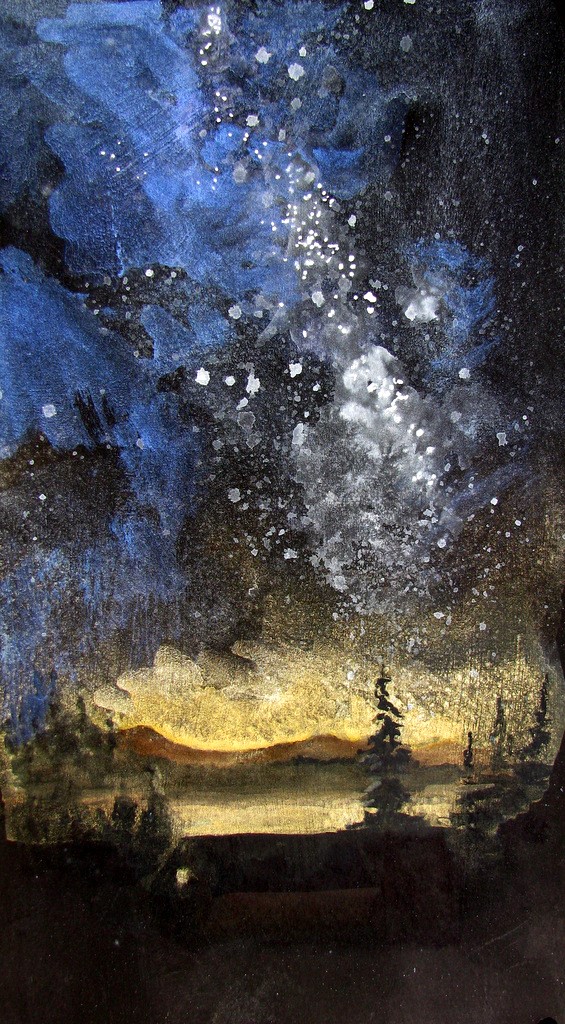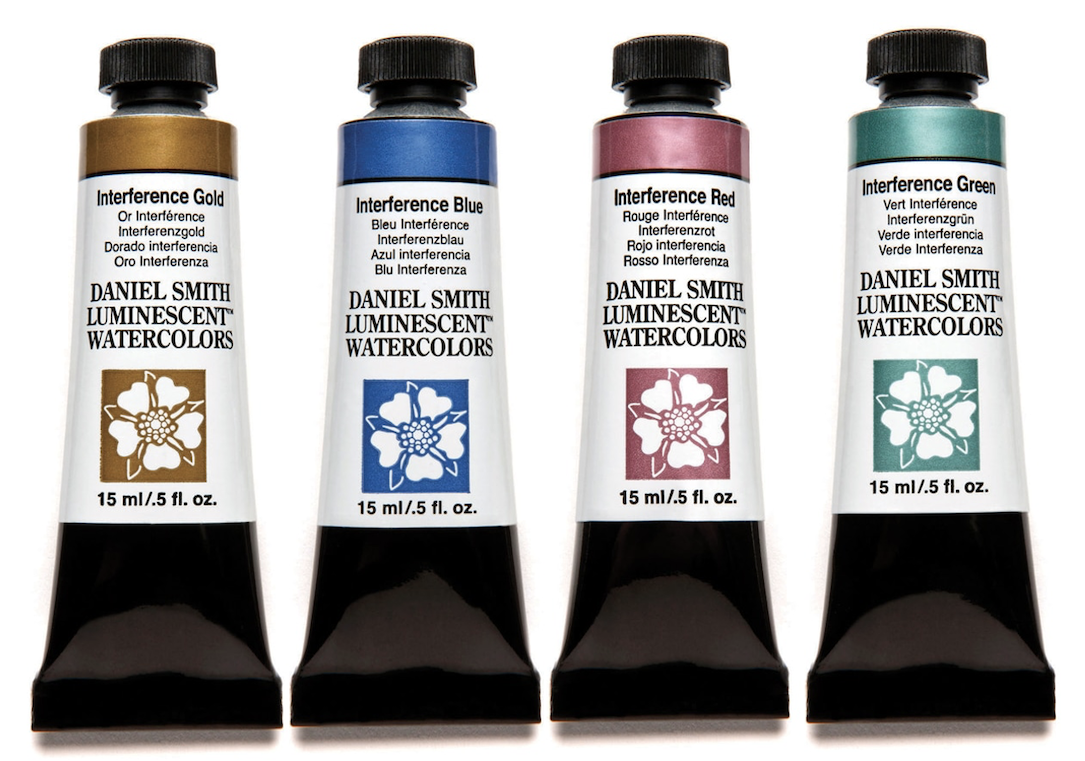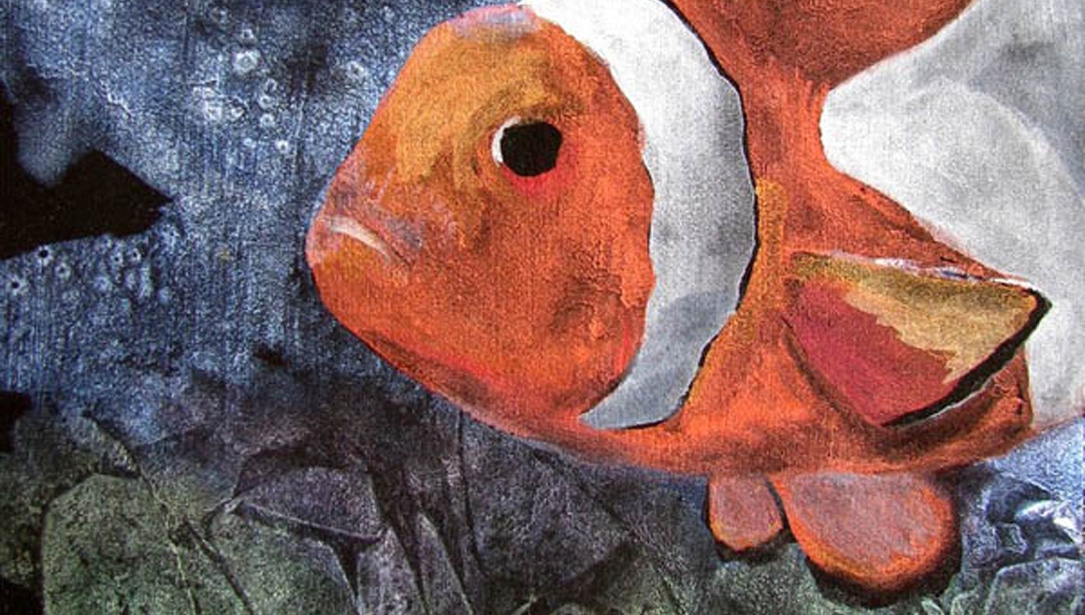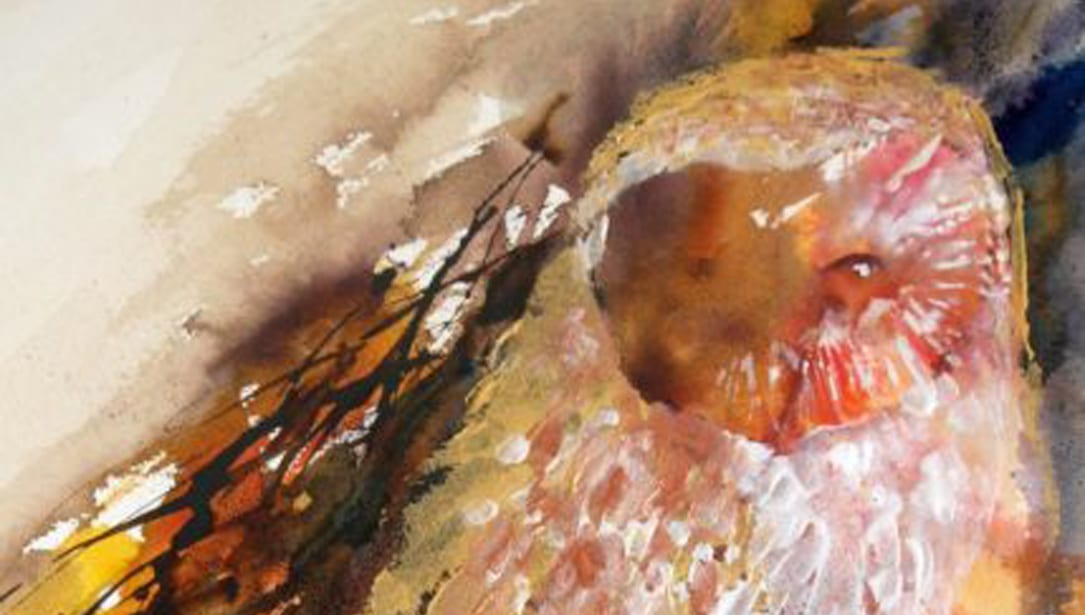When a friend gave me a gift of some DANIEL SMITH Watercolor Ground in Mars Black, I’ll admit I scratched my head and wondered what I was ever going to do with it. But then the fun began! I discovered a great new way to upcycle some of my old un-wonderful watercolor paintings by covering them with a coat of Mars Black Watercolor Ground. Painting on a black surface isn’t exactly a classic watercolor technique, so I decided to just play around and see what happened.
All the opaque watercolors work fine on black ground, such as Chromium Green Oxide, Graphite Gray, Titanium White, Chinese White and even Lamp Black.
The real fun, however, began when I dipped into my DANIEL SMITH Luminescent Watercolors. I became fascinated as I watched twinkling stars in the night sky appear within a mix of Iridescent Sapphire, Pearlescent Shimmer, Iridescent Gold, Duochrome Mauve and more…the sky is literally the limit!
Watching these colors play together wet into wet is a captivating experience all on it’s own. I think I have found a new addiction…

About Watercolor Ground:
– Archival and acid free
– Creates a soft, absorbent surface similar to cold press watercolor paper
– Excellent surface for all watercolors
– Holds up to vigorous scrubbing without any damage
– Heavily pigmented with a thick, brushable consistency
– Easy application
– Use it to repair and rescue paintings
– Transparent watercolors can now be shown on any surface
– Frame your work without glass
– Fantastic for mixed media—combine with acrylics, pastels, pen and ink, stamping, collage, etc.
– Available in 6 colors: Titanium White, Pearlescent White, Iridescent Gold, Buff Titanium, Mars Black and Transparent
Preparation
Absorbent or semi-absorbent surfaces like paper, canvas, fabrics, wood, plaster, shells or hardboard require no special prep beyond making sure the surface is clean before brushing on the ground. Non-absorbent surfaces such as metal, plastic or glass should be lightly abraded with sandpaper or steel wool first.
Application
Use it straight from the container with a soft-haired synthetic brush or foam brush. Try a foam roller for a smoother finish or a hog bristle brush for a more textured finish. Wash brushes immediately after use and do not use your good brushes! When using the ground to rescue a painting, thin it in a small dish with up to 10% water and use softer bristles like a hake brush. DANIEL SMITH Watercolor Ground works beautifully with both watercolors and thinned acrylics. Because it creates a surface more absorbent than paper, you will want to use less water with your paint. Experiment and see what works best for you.
Curing
Let the ground dry and cure for at least 24 hours. This allows it to attain the right degree of absorption. The ground is highly pigmented, so one coat will cover most surfaces. Very absorbent surfaces such as unfinished softwood may require two coats. Allow the first coat to cure before adding the second.
Finishing
As with all watercolors, your work on Watercolor Ground will need to be protected with an aerosol varnish if it will not be framed behind glass.







